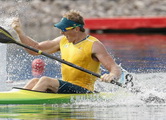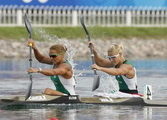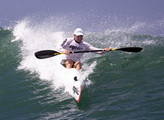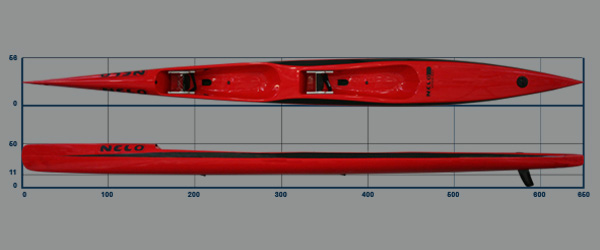News
Why do we do what we do?
|
Why do we do what we do?
A few years back I had my first real attempt at coaching, having been an athlete for quite a long time.
Ben Brown came to me, asked for some help ,and off we went. A year later he was world champion, and that left me, with one World Champion from one attempt as the best coach in the world, maybe ever!
Encouraged by my success I took on a small group of young paddlers from my club and started coaching them…… what could go wrong? Surely it was only a matter of time before they too were up at the top end.
Well, as any coach who has coached any athletes will know the next episode in my coaching career did not end so well. I gave this group the same instruction and the same exercises I gave to Ben and waited for them to excel. They did improve, but in reality I think that was more due to their faith in me than it was to the training I was setting. It turned out I was an average coach at best and one that lacked the language, experience and knowledge to transform an average paddler into a great one.
With just these two short experiences of coaching I was exposed to everything that is frustrating about our sport.
Ben is a very well coordinated athlete; he understands his body and can translate pretty much any exercise he is given into something that adds to his kayaking ability. His body can feel what needs to happen and he can give good feedback on how the instructions affected his paddling. Ben is fundamentally, not ordinary.
My other athletes were ordinary (at least in their canoeing abilities) , they are the athletes most coaches spend 90% of their coaching life working with. They follow instructions where they can, they make temporary changes that need constant reinforcement and though they can perform most exercises reasonably well they then cannot translate this into paddling better or faster. It is like teaching them Greek in the gym and then testing them in German on the water.
Now, Ben is not the only extraordinary person out there, most, if not all of the athletes at the top end of our sport are not ordinary . However they are the 1% of the athletic population who has excellent control over their body and its nervous control system. These people are VERY coordinated!
What I would like to put out there and hopefully get some comment on, is this. Why as coaches do we look to these extraordinary athletes and assume that because they do a certain exercise that this exercise is good for our 99% of ordinary athletes?
As an example, we have all done years of bench press and bench pull because that is what the Hungarians (who were winning) did. Bench press is a very simple exercise in which the hands are pushed away from the shoulders and bench pull is the opposite, the arms are bent to bring the hands towards the chest. We have done this religiously for generations and for all those generations the best people in the world have done them also. It seems almost a no-brainer that we should be doing these. I think you would struggle to find a canoeist who does not know their maximum bench press weight! You will also struggle to find an athlete whose bench press/pull weight is not increasing. Contrast this though with the hundreds who are not seeing their boat speed increase accordingly.
Having encouraged our athletes to do these two exercises in the gym we then spend fruitless hours in the boat telling them not to punch/push/rush the top hand forward and not to bend the pulling arm on the way back…..the very two movements we have just taught them in the gym!!
My extraordinary athlete can take the strength he has gained through doing any exercise and turn it into kayak strength, the other 99% I don’t believe can. This of course does not matter if you have enough athletes who are extraordinary but most of us do not!
My ordinary athletes will learn a very simple pushing/pulling movement and add more and more strength to it. I will then expect them to turn this simple linear movement into one of the most complex and coordinated movements in sport….the kayak stroke! It just does not make sense to me. The demands on their nervous system are simply poles apart.
The kayak stroke requires the body to generate power from the legs, transfer it through the trunk and then eventually through the arms, which simply express the movement the trunk has made. The last thing we need is the hands to be moving forward faster than the chest/shoulder and for the bottom arm to bend during the pull phase. We spend hours correcting (or at least trying to) both these common faults.
All the time we talk about connection with the water, it is an incredibly complex movement which requires total body coordination from the pushing foot through the body to the pushing shoulder, the timing of the movements is critical and the sequencing is everything. Yet we still ask athletes in the gym to perform simple linear movements and even then praise them for isolating the “relevant” muscles by excluding the use of legs, for example, in bench press. The “strict” exercise is somehow valued more highly but none of us seem to question why.
Even speaking to some of the best coaches in the world they still perform these simple movements and that reinforces our belief in them…..what you have to remember is that these “best coaches” also happen to work with the best athletes…the 1%. It would seem to me that one of the best skills a coach can have is choosing his athletes wisely, from that point on the rest is really only fine tuning, as I discovered with Ben.
Most coaches though have to make the best of the material they are given and my feeling is, that a lot more thought needs to go into these athletes than you would ever need to put into a 1% athlete.
I am currently working/experimenting with a small group of 99% athletes, they are not the gifted 1% but they have a good attitude. I am slowly trying to work out exercises that do not accentuate and encourage the mistakes they make on the water but actually go some way to solving these mistakes. It is most definitely a work in progress.
What I do know though is that despite the fact that 99% of all the Olympic medalists have done hours of bench press and bench pull there are 99% of athletes who have done these exercises for the same amount of time who have not improved at all.
My thoughts are that if the athlete is talented/coordinated enough it doesn’t matter one bit what exercise you give them, they will still be able to translate the strength they have gained into a little more boat speed, but for the vast majority the gym work we do needs to be a much more scientific process.
This article is based purely on my experience as an athlete training with other athletes and as a very part time coach with relatively few coaching hours compared to most coaches. I am not stating any of my opinions as fact, rather I am putting them out there so they can be expanded on, shot down and discussed by those with more experience than myself.
Even if you don’t have vast coaching experience yourself you could answer this one question for me……have any of you seen an improvement in the boat speed of an average paddler when they got stronger at bench press and bench pull (or any of the other simple movements we do in the gym)?
When the s^*t hits the fan and stress kicks in we will always revert to using our most trained, strongest muscle movement, if this movement is a simple push/pull then as coaches we have no right to berate our athletes for punching forward and bending their pulling arm. The mistake, surely, is of our own making! |
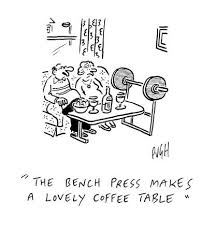 |

